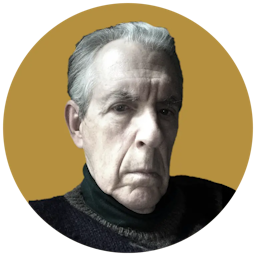Biography: The Long and Short of It
Despite decades of complaints, publishers churn out long biographies. Among those who yearned for the short form was the late James Atlas, and he did something about it.

Publishers churn out long biographies — even multi-volume biographies — despite decades of complaints about archive-obsessed tomes that seem to tell every detail. These are deplored by no less than the author of a five-volume biography of Henry James, Leon Edel.
Knopf seems to be especially fond of doorstops: “A Life of Barbara Stanwyck” (Volume 1 is 1,057 pages), “Red Comet: The Short and Blazing Life of Sylvia Plath” (1,154 pages), and “Buster Keaton” (832 pages).
The author of a hefty biography of Saul Bellow, the late James Atlas, yearned for the short form, establishing the Penguin Lives series, with inspired choices of writers not usually attracted to the biographical form: Roy Blount, Jr. on Robert E. Lee; Bobbie Ann Mason on Elvis Presley; Louis Auchincloss on Woodrow Wilson.
Atlas then started another series of short biographies: Eminent Lives, featuring Bill Bryson on William Shakespeare; Christopher Hitchens on Thomas Jefferson; Edmund Morris on Beethoven. In a partnership with Amazon Publishing, Atlas was at it again with an Icons series: Julian Bell on Van Gogh; Michael Wood on Alfred Hitchcock; Brooke Allen on Benazir Bhutto.
Yale University Press publishes the Jewish Lives series of short biographies, and Oxford University Press offers Spiritual Lives, edited by Timothy Larsen. His series is not, as you might imagine, devoted to religious lives but to “prominent men and women” who have engaged with religion in “significant and resonant ways that have often been overlooked or under explored.”
So, in the Oxford series we get “Margaret Mead: A Twentieth-Century Faith,” exploring an avowedly secular figure who nonetheless remained Christian. She married an Episcopal priest, and the failure of that marriage, Elesha J. Coffman contends, resulted in “a new search for a religious expression compatible with her multiple and ardent commitments to science, progressive social causes, and the men and women she loved.”
Mr. Larsen’s ecumenical series includes “Benjamin Franklin: Cultural Protestant,” by D. G. Hart. Raised in a Puritan culture, Franklin developed an Age of Enlightenment rationalism, yet he continued to express his sense of “dependence on divine favor, invoked God’s assistance, studied the creator’s creation, but could not accept the tenets of organized Christianity.”
You can see where this series is headed: toward figures who embody an idea of the spiritual and of a higher power not normally associated with religious orthodoxy who nonetheless become, as in Mark Twain’s case, a “Preacher, Prophet, and Social Philosopher,” as Gary Scott Smith’s subtitle insists. Mr. Smith admits Twain is a slippery subject, whose views of theological topics were ever changing.
In “Theodore Roosevelt: Preaching From the Bully Pulpit,” Benjamin J. Wetzel begins by noting novelist Owen Wister’s observation that if you could melt Roosevelt down, what you’d have left is “a preacher militant,” the author of “a book of sermons,” as journalist William H. White said about one of TR’s collections of his writing.
I didn’t immediately recognize this “Spiritual Lives” subject: “Arthur Sullivan: A Life of Divine Emollient,” by Ian Bradley. Is this a biography of some important divine that I have somehow never heard of? Hardly. This is the Sullivan of Gilbert and Sullivan. It is news to me that he wrote an oratorio, “The Light of the World,” based on the life of Jesus.
Sullivan’s master work, “rarely performed for over 140 years,” was hailed in November 2018 as “a truly revelatory discovery” that “touches greatness.” Sullivan explores Jesus’s spiritual depth by making him a “real character” devoid of “pious sentimentality.” This Sullivan, “prepared to unsettle as well as to comfort,” does what Timothy Larsen claims for his series: to “recast important figures in fresh and thought-provoking ways.”
There are plenty of biographies of Queen Victoria, but none like Michael Ledger-Lomas’s “Queen Victoria: The Thorny Crown,” which begins not at all where you would expect. Mr. Ledger-Lomas captures the spirit of his biography and of his subject in sentences like this one: “The integrative role of Victoria’s spiritual life in Victoria, British Columbia mattered because religious fractures ran as deep at the margins of her Empire as in its metropole.”
It is easy to imagine a longer biography taking its time to fill in that geographical spread of the British empire and of the Queen who ruled over it. Advocates of short biographies, though, might well invoke the cliché that less is more.
Mr. Rollyson is the author of short biographies of Marie Curie and Pablo Picasso and, with Lisa Paddock, has co-authored two others, of Thurgood Marshall and Emily Dickinson.

